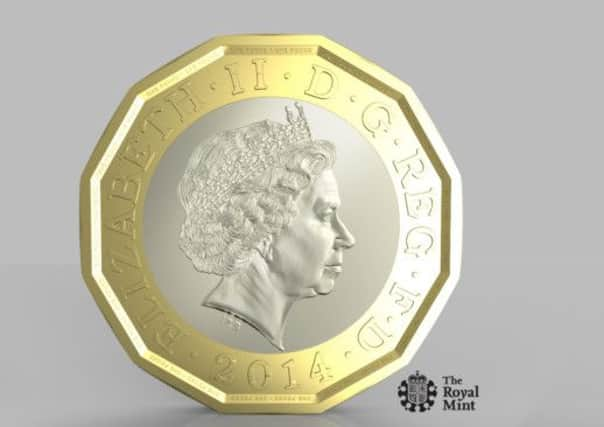How the forgers forced a return to the threepenny bit


In 1984 I was 10-years-old and for a while I held a bit of grudge against the Royal Mint. Why? Because that was the year they chose to discontinue the £1 note.
True, most of the ones I’d been given up until then had been slightly grubby and torn at the corners, but they represented a passport into a grown-up world. With a single note, you could buy a copy of Smash Hits, a Wham bar and still go home with change in your pocket.
Advertisement
Hide AdAdvertisement
Hide AdThere was something about a small pile of those old pound notes that as a child made you feel impossibly rich. Coins even the gold ones they promised as replacement would never be as good.
They weren’t. It’s now been 30 years since the old notes were retired and their replacement is to face a similar fate. Vulnerable to counterfeiters, there are now more than 45m fake £1 coins in circulation and the Royal Mint has had enough. On Monday it unveiled the brand new version which harks back to pre-decimalisation and the old “threepenny bit”. It will also be the hardest in the world for criminals to copy.
Counterfeiting is a sophisticated business these days and Royal Mint figures show that around one in 33 £1 coins in the economy is a fake. In some parts of the UK, it’s as many as one in 20 and with around two million fakes having to be fished out of circulation every year, it’s an expense headache for banks, cash handling centres and the economy. With banks not in a position to refund those left holding fakes, it can also prove costly for small shopkeepers who still take their till takings into branches.
While its relatively easy to spot a fake - poorly defined milled edges and uneven lettering are a dead give away - when you have one in your hand, trying to separate the real from the bogus in general circulation is a much more difficult prospect.
Advertisement
Hide AdAdvertisement
Hide AdHaving issued various guidance and tried numerous attempts to crackdown on the counterfeiters, the Royal Mint has been left with no option. The coin which trumped the old pound note had to go.
Several features of the planned new coin, including its 12-sided shape and the use of two differently-coloured metals, should make it more difficult to fake.
The extent of the problem was highlighted in 2007 when Marcus Glindon was jailed for five years after admitting producing fake £1 coins with an estimated value of £14m. The bogus production line had been operating for around seven years and it was thought that at one stage the 37-year-old from Enfield was making between 10,000 and 12,000 a day.
The new coins will incorporate the Royal Mint’s new “isis” technology which stands for integrated secure identification system, and means they can be quickly scanned to check they are genuine.
Advertisement
Hide AdAdvertisement
Hide AdDubbed the “most secure circulating coin in the world”, the one downside to the new 12-sided design is that vending machines and parking meters will have to be overhauled. The Government is currently consulting on the impact of the new coin and a Treasury spokesman said it is hoped that some changes can be made as firms make their regular updates to vending machines.
The nostalgic design has been inspired by threepenny bit, which was in circulation from 1937 until decimalisation in 1971 and its distinctive size and shape is said to have made it the easiest coin to recognise during the blackouts of the Second World War.
Since then, the halfpenny has been withdrawn, the 5p has got smaller and we’ve been given a new 20p coin. All have been more robust than the old pound note. On average the notes lasted just nine months due to constant use, but they made generations of children feel like millionaires.